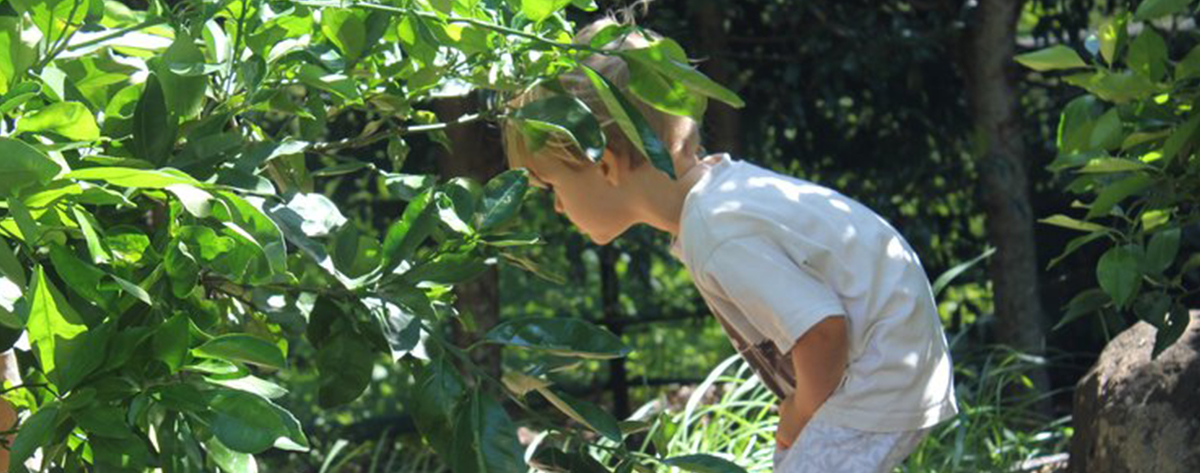The Education of the Child in the Light of Anthroposophy: Rudolf Steiner
"Thus the joy of the child in and with his environment must be reckoned among the forces that build and mould the physical organs. Teachers he needs with happy look and manner, and above all, with an honest unaffected love. A love which, as it were, streams through the physical environment of the child with warmth may literally be said to ‘hatch out’ the forms of the physical organs.
The child who lives in such an atmosphere of love and warmth, and who has around him really good examples for his imitation, is living in his right element. One should therefore strictly guard against anything being done in the child’s presence that he must not imitate"
Essential Characteristics of Steiner/Waldorf Education for the Child from Birth to Seven
The future development of each individual child and of humanity as a whole depends on health-giving experiences in the first seven years of life. An atmosphere of loving warmth and guidance that promotes joy, wonder, and reverence supports such healthy development. The most essential aspect of the work with the young child is the inner attitude of the educator, who provides the example for the child’s imitation. Therefore the work of the Steiner/Waldorf educator demands an ongoing process of research and self-education including anthroposophical study, meditative practice, artistic and practical activity.
In Steiner/Waldorf kindergartens, preschools, home care programs, childcare centres, playgroups, parent-child programs and other settings, foundations are laid for later learning and healthy development, including life-long physical, social, emotional, intellectual, and spiritual growth.
This education, based on an understanding of the development of human individuality, offers protection and respect for the dignity of childhood. It includes an understanding of the unfolding development of the child from pre-birth to seven, including the unique significance of the development of walking, speaking and thinking in the first three years of life. Activities in Steiner/Waldorf early childhood education take into consideration the age-specific developmental needs of young children, from a focus on will-oriented physical activity in the first three years, then on imaginative play in the middle years of early childhood, and later a more cognitive approach to learning after the child enters school.
SECA is a member of the International Association for Steiner/Waldorf Early Childhood Education (IASWECE).
IASWECE Council members (early childhood educators and trainers from 32 countries) prepared the following statements describing the essential characteristics of Steiner/Waldorf education for the child from birth to seven.
Organisations that are members of SECA offer programmes which reflect these principles.
EDUCATION PRINCIPLES
We recognize that healthy child development unfolds most fully in the context of a community with healthy social relationships among parents, teachers and children. Steiner/Waldorf educators strive to create such conscious, collaborative communities around the children in their care and see their activity as part of a worldwide cultural impulse.
-
Waldorf based programs may differ according to geography, culture, group size, age-range, and individual teaching approach. Granting these differences, Waldorf programs share certain fundamental characteristics:
- Loving interest in and acceptance of each child
- Opportunities for self-initiated play with simple play materials as the essential activity for young children. This is the young child’s work and makes it possible for them to digest and understand their experiences.
- Awareness that young children learn through imitation, through the experience of diverse sensory impressions, and through movement. Their natural inclination is to actively explore their physical and social environment. The surroundings offer limits, structure and protection, as well as the possibility to take risks and meet challenges.A focus on real rather than virtual experiences to support the child in forming a healthy relationship to the world.
- Artistic activities such as storytelling, music, drawing and painting, rhythmic games, and modeling that foster the healthy development of imagination and creativity.
- Meaningful practical work such as cooking, baking, gardening, handwork and domestic activity that provide opportunities to develop unfolding human capacities. Here the emphasis is on the processes of life rather than on learning outcomes.
- Predictable rhythms through the day, week and year that provide security and a sense of the interrelationships and wholeness of life. Seasonal and other festivals are celebrated according to the cultural and geographical surrounding
Education prior to the change of teeth
In the early years of life children first learn through their own movements and the use of their senses to form and take hold of their own body. The will to learn which they have brought with them from the prenatal realm expresses itself in a tremendous urge to move and be busy. Their movement organization is activated by every impression they receive through their senses. The term we use to describe the link between sensual experience and will activity is "imitation".
For the children, learning at this stage is thus a matter of experiencing their new world through their senses and then using play as their means of absorbing those experiences. Current brain research has repeatedly shown that this activity directly influences the development of the body. It is the sense impressions which help to develop both the functioning of the sense organs and thus also the maturing processes in the brain. (Herman Haken, Maria Haken-Krell. "Erfolgsgeheimnisse der Wahrnehmung", Berlin 1994; The Secrets of Perception, German only).
Steiner formulated this as follows in 1907:
"Just as the muscles in the hand grow strong when they do work suited to them, so are the brain and the other organs set on the right course if they receive suitable impressions from their surroundings." (Rudolf Steiner, "The Education of the Child and Early Lectures on Education", Anthroposophic Press, 1996)
This leads us to ask ourselves: How can we give children an environment that enables them to have primary sensual experiences of this kind?
How can we protect them against sensual overload? What are we offering them that is worth imitating?
Since children are in human environment it is up to those who educate them both to protect them and to act as models worthy of imitation. Anything simple and natural, including what they are given by way of toys, provides far better stimulus for their own inner activity than does a technically perfect environment.
Zimmermann, Heinz: Waldorf-Pädagogik weltweit, Ed.: Freunde der Erziehungskunst, 2001.
